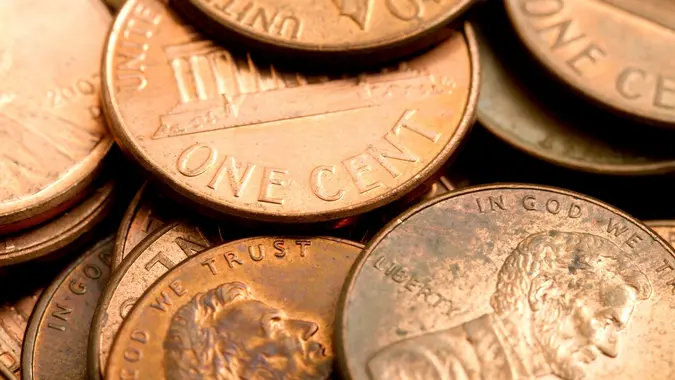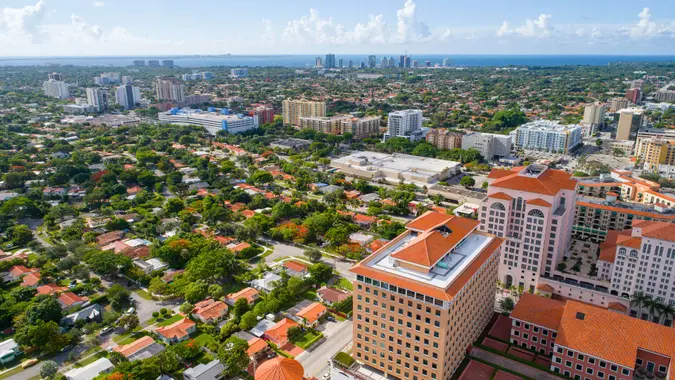Inflation 2023: Could Grocery Prices Go Down as Biden Demands an End to Price Gouging?

Commitment to Our Readers
GOBankingRates' editorial team is committed to bringing you unbiased reviews and information. We use data-driven methodologies to evaluate financial products and services - our reviews and ratings are not influenced by advertisers. You can read more about our editorial guidelines and our products and services review methodology.

20 Years
Helping You Live Richer

Reviewed
by Experts

Trusted by
Millions of Readers
As inflation continues to pervade nearly every part of everyday life, the average American worker is being squeezed by rising costs, and elevated grocery prices are largely to blame. The cost of purchasing household groceries still remains stubbornly high across the U.S. and weekly grocery shopping is far more expensive than just a few years ago.
Biden Administration Speaks Out About High Grocery Prices
CNBC reported that prices have skyrocketed as the U.S. has emerged from the pandemic. In fact, the average price of all goods rose 13% in the two years starting from April 2021, according to the Bureau of Labor Statistics. The average food price in that same period jumped an incredible 20%. Price hikes were a result of several factors including increased consumer demand, pandemic stimulus relief checks, and supply chain issues.
Now the Biden Administration is accusing corporations of charging grocery prices that are artificially high. The inflation rate has slowed and some shipping costs have come down, yet grocery prices aren’t falling at the same rate.
“Any corporation that has not brought their prices back down, even as inflation has come down, even as the supply chains have been rebuilt, it’s time to stop the price gouging,” Biden said. “Give the American consumer a break.”
White House Supply Chain Initiative Is Taking Hold
To fight back against high grocery prices, the Biden Administration is implementing a White House supply chain initiative to strengthen supply chains critical to America’s economic and national security. This includes the creation of a Supply Chain Distribution Taskforce, aimed at working with local governments, states, family farms, businesses, and others to address and rectify the supply chain crisis that has greatly contributed to increased food prices. It was explained that when supply chains are under control, food prices fall, resulting in more cash flow and economic security for American families.
In addition, the USDA is making changes to battle food supply chain issues. An investment to the tune of $196 million will strengthen U.S. domestic food supply chains and create more opportunities for farmers and entrepreneurs in 37 states and in Puerto Rico. These investments include creating more diversified food processing, stronger agricultural markets, and fertilizer production. The idea? To expand income opportunities for farmers, lower food costs, and create new economic opportunities for people and businesses in rural areas.
This initiative is a part of Biden’s larger economic agenda aimed at improving the economy, otherwise known as “Bidenomics.” Biden has been a target for inflation blame and these initiatives come right before the 2024 presidential race in an effort to persuade voters of Biden’s economic progress and resilience during his term.While Americans are still feeling the sharp pinch of inflation, Biden’s reelection for a second term hangs in the balance. With this initiative now in motion, it remains uncertain at this point whether the Biden administration’s policy agenda will have a significant effect on reducing grocery costs nationwide.
 Written by
Written by  Edited by
Edited by 

























